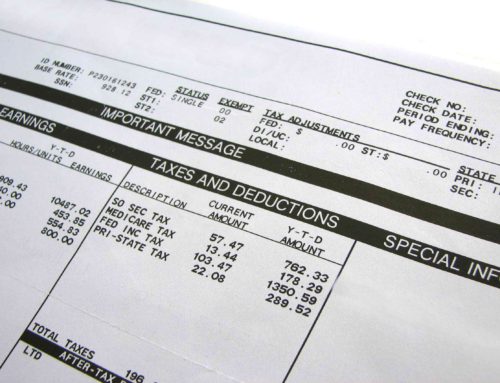Read below to learn about some different ways to generate passive income and my personal experience with some of these strategies.
If you’re familiar with passive income, you know that passive income is a way of earning money while exerting little to no effort. This is true, but keep in mind that passive income is also a stateful concept, meaning it doesn’t always require zero effort. There’s typically a good bit of work to be done on the front end to ride that passive income wave on the back. I have another post that goes more into that, but this post is focused on ways to generate that passive income. Without further ado, here are 5 ways (in no particular order) you can start generating passive income.
1. Real Estate Investing
Investing in real estate is probably the most well known strategy for generating passive income. The idea behind this method is extremely simple. Buy a property and then rent it out for more than what it costs you each month to run it. Pretty straightforward, right? Of course, there are hundreds of steps that are required to get to the passive state which I go into detail about in other posts, but the end state is truly passive income. In our case, we receive a check (actually 2 checks) every month. Literal mailbox money. After covering our PITI (Principal, Interest, Taxes, and Insurance) we’re left with a profit. The profit I’m considering also accounts for maintenance and vacancy planning. Maintenance isn’t required every month and we have long term leases in place, but setting aside a little every month to account for these creates a nice cushion and avoids an emergency situation if something were to come up. For instance, if a tenant reports an issue with the property that isn’t covered by their or our insurance policies, we have the money in reserve to take care of it. On a typical month, the only work we do is make a mobile deposit of the rent payments…and that’s only because our tenants haven’t taken us up on our multiple offers of using digital payment options (wink wink, tenants, if you’re reading this).
2. House Hacking
House hacking simply means that you’re renting out a portion of the space that you’re already living in. It’s Airbnb without the middleman and with a long-term tenant. I consider house hacking the younger sibling of real estate investing because you and the tenant are sharing the same property, which typically means less space. But, just because it’s the younger sibling doesn’t mean it can’t still yield significant returns. The benefits of house hacking can be great. For one, you already own the place so you don’t have to go out and find and vet a property and then go through the whole lending and purchasing process again. Another reason house hacking can be great is because you can keep a close eye on the property…because you’re living there. So with little to no effort, you can start collecting monthly rent. This is a great strategy you can use to reduce your monthly cost of living. This extra money you’re collecting from your tenant/roommate can then be used to pay down debt (your mortgage for example) or used to save up for a down payment on a traditional investment property or used to get the ball rolling on another form of passive income. In 2009, when we lived in Cincinnati, we had our basement finished and then rented it out for the next 2 years. During that time, the rent we collected completely paid for the remodel!
3. Invest in Dividend Stocks
A dividend is a portion of a company’s profits they pay to shareholders. You can almost think of it like a bonus…for doing nothing. Not all companies pay dividends, but those that do, do so basically as a way of saying, “Hey the company is doing and well and thank you, shareholders, for helping to ensure that by investing in us.” Dividends are typically paid out quarterly and are based on the number of shares you hold. So let’s use Verizon as an example. As of this writing, Verizon has paid a quarterly dividend of $0.615 per share for the last 4 quarters. This means that if you owned 100 shares of Verizon stock that whole time, Verizon would’ve cut you a $61.50 check every 3 months for the past year. At this point, you may be thinking “whoop dee doo.” And you’re right, $20/month isn’t really a lot of money. But consider this a couple of ways. First, if you take the immediate benefit, this is enough to cover your monthly Netflix premium membership and buy a 6 pack of the good microwave popcorn. Boom, so the weekly movie night is paid for and you’ve done no work.
Or, you can look at the longer term benefit. You also have the option to reinvest the dividends. So instead of receiving cash each quarter, your dividend payment would be used to automatically purchase additional shares. This means over time, you accumulate more shares. Assuming the company continues to perform well, this means that not only are your dividends increasing (because you own more shares), but you also benefit from the possible appreciation of the stock itself over time. So given enough time, instead of having 100 shares, you may end up with 200 shares of that stock and you’re receiving 2x the dividends. And then, also consider how that starts to snowball when you start adding other dividend stocks to your portfolio. That Netflix and popcorn becomes theater and fine dining, all for doing no work. Just keep in mind that neither dividends nor stock appreciation are guaranteed so be sure to do your research and understand the risks.
4. Create and Sell Digital Assets Online
How great would it be to literally make money while you sleep? This is what one of the OGs in the financial independence space and the guy that started me on my FI path, Pat Flynn, talks about in his book Let Go. The internet reaches nearly 60% of the world’s human population. That’s over 4.5 billion (with a “b”) people. What if you created something and sold it online for just $1.00? And what if only 1% of the people on the internet bought your product. Then congratulations, you just made $45 million. This illustrates the power of scale and that’s exactly what the internet offers, massive scale. If you create an eBook or an app or some other original work and sell it online, you are selling to a huge audience. Sure, it’s unlikely that everyone on the internet will want it, but there are so many people online with so many different wants and needs, if you create something of quality, there’s a good chance you’ll find a customer base. My suggestion, find a niche or a focus. Think about what you know well or you’re passionate about and create a digital product that’s targeted to or serves people in that space. If you’re a subject matter expert on fantasy football and have developed a strategy for drafting wide receivers in a 12 man, PPR, keeper league (yes, get that specific), put that info in an ebook and sell it online. You’ll be a certified passive income earner when you wake up one morning and see that people in another time zone were downloading your work and paying you while you were sleeping.
5. Start a Blog
Lastly, but not least of all, take that subject matter expertise I talked about above, expand it beyond a static ebook and start a blog. With a blog, you can build a community and a following of readers that are interested in your content. In terms of passive income, starting a blog has a bit of an asterisk next to it because it definitely takes work up front and then, if you want it to be good, some ongoing work. The ongoing work includes keeping fresh content on the blog, engaging with your existing audience, and marketing to drive new traffic, just to name a few examples. However, the potential for ROI (return on investment) can be huge. It’s not uncommon for good bloggers to make 4-figure monthly incomes. The top guys in the blogging game make 5+ figures a month. Pat Flynn, who I referenced above, makes around $200k a month from his blog!
“But how, Sway?”, you may be asking. Bloggers use a number of techniques to make money from their blogs. The most obvious way to the casual observer is via banner ads. Other ways include affiliate links (FYI, the “Let Go” link above is an affiliate link), selling physical or digital products, charging a recurring fee for enhanced content (e.g. a members only section), or taking non-charitable donations. I go into more detail in each of these in my How and Why to Start a Blog post.
So, although running a successful blog may not be totally hands off, I still consider it a strong potential for passive income because, if done right, your blog will be working 24/7 to reach a global audience and deliver revenue, even when you’re on the beach or hanging out with friends or blankly staring into space trying to remember what it is that you’re supposed to be doing instead of blankly staring into space.

Ok, I’ve equipped you with ideas. The next step is for you to take action! I know, that’s the hard part, but the rewards are waiting. If you have other passive income ideas, drop them in the comments.








Tell us more details about the real estate investing experience!
I’ve got a whole post on that coming. The good, the bad, and the ugly of it. Stay tuned.